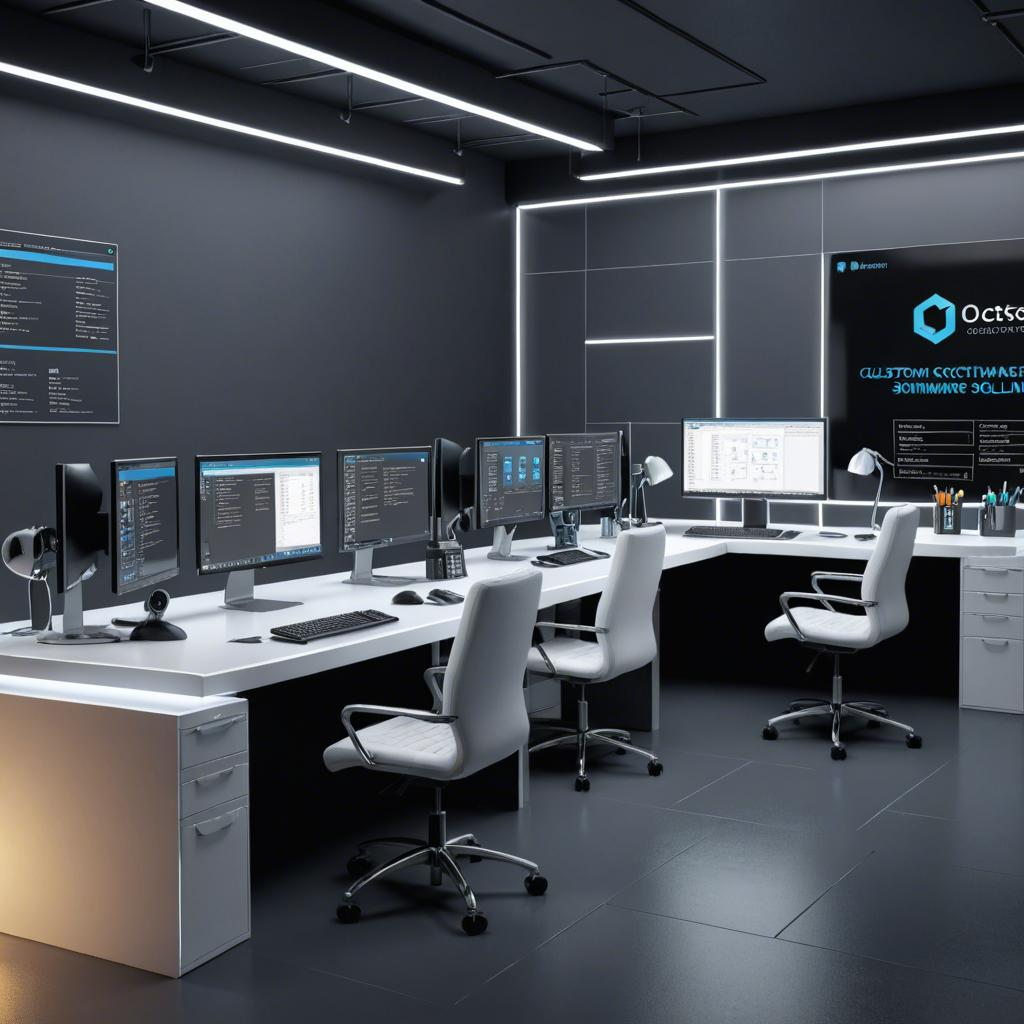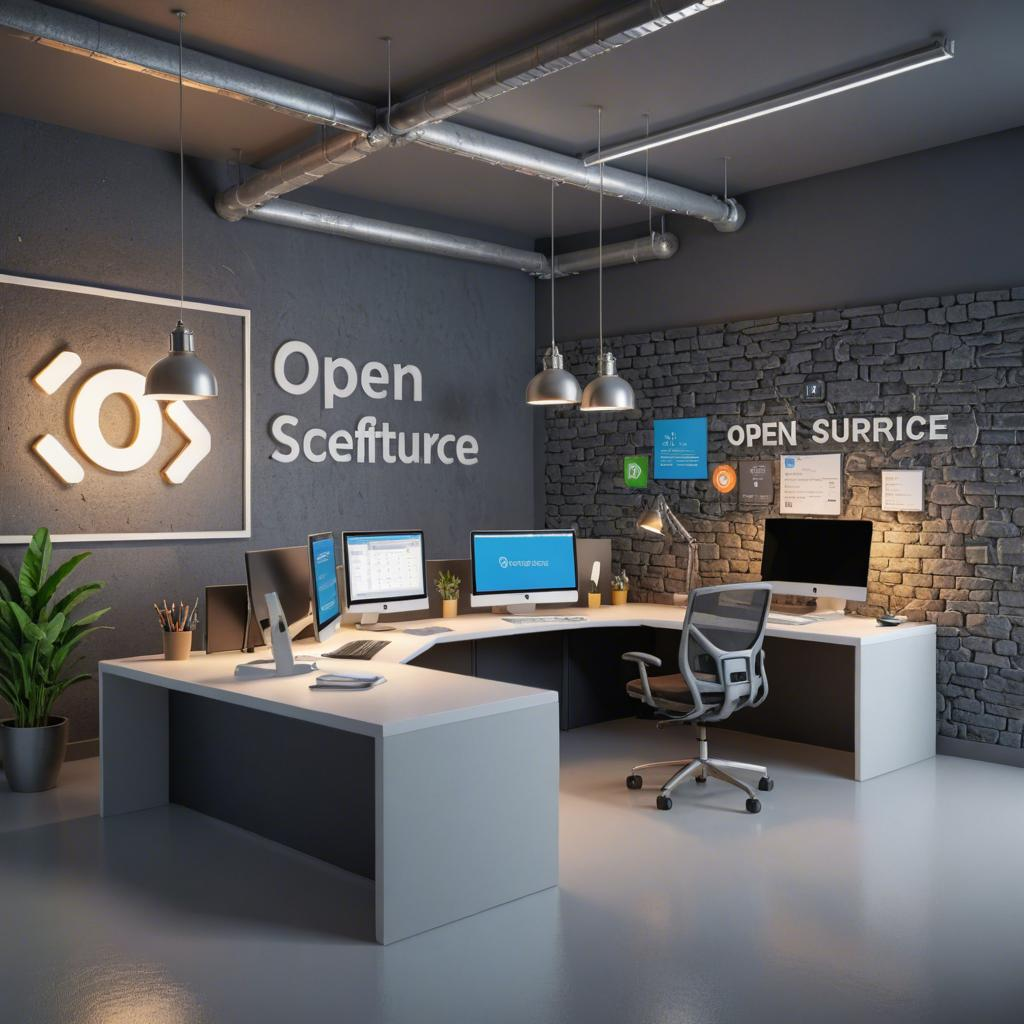Using RFID Scanners for Secure Access Control in 2025
Advanced RFID Access Control System with AI, Blockchain, and IoT Integration: Secure, Scalable, and User-Friendly Solution for Access Management in 2025.
Introduction
Here’s a possible 100-word introduction:
RFID access control systems offer advanced security features for modern organizations. These systems utilize the latest RFID technology for high-frequency, long-range, and reliable data transmission. AI-powered access control analyzes data and patterns for improved security and convenience. Blockchain security ensures secure and tamper-proof data storage and access control. Real-time monitoring grants or denies access based on predefined rules, while multi-factor authentication adds an extra layer of security. Encrypted data transmission prevents unauthorized access, and customizable access levels cater to different user roles and job functions. Seamless integration with ERP systems and other systems provides centralized management, while mobile access capabilities and scalability accommodate large-scale deployments. Additional features include remote management, customizable user interface, real-time reporting and analytics, compliance with industry standards, integration with IoT devices, and automated access granting and revoking. All these features contribute to a user-friendly design and improved operational efficiency for your organization.
1. Advanced RFID technology: Utilizing the latest RFID technology to ensure high-frequency, long-range, and reliable data transmission.
In the future, RFID technology will continue to evolve, with advancedRFID readersand scanners becoming the norm for secure access control. Utilizing the latest RFID technology ensures high-frequency, long-range, and reliable data transmission. TheseRFID UHF scannerscan read tags from a distance, making contactless access control a seamless experience. The use of UHF tags, such assticker tags,jewelry tags, and on-metal tags, enables access control in various environments and scenarios. The integration of RFID technology with mobile apps, AI development, blockchain development, ERP development, software development,SEO companies, and other industries further enhances its capabilities. For instance, in a city like New York,RFID UHF tagscan be integrated with public transportation systems, allowing contactless payment and access control to subways and buses. This not only increases efficiency but also enhances security, as there is no need for physical contact with payment terminals or access control readers.
2. AI-powered access control: Integration of AI algorithms to analyze data and patterns for improved security and convenience.
As we move towards 2025, the use ofRFID scannersfor secure access control continues to evolve. One significant advancement is the integration of AI-powered access control, which utilizes AI algorithms to analyze data and patterns for improved security and convenience. These advanced systems can learn from historical access data, detect anomalies, and even recognize specific individuals based on their RFID tags or biometric data. By leveraging AI, access control can become more dynamic and adaptive, adjusting to changing security risks and granting access based on predefined rules and real-time context. This technology can be particularly useful in high-security environments such as government buildings, financial institutions, and data centers. Furthermore, the integration of AI algorithms can also enable contactless access control, reducing the need for physical contact withRFID readersand promoting a more hygienic and touchless experience. With the continued advancements in RFID technology and the integration of AI algorithms, access control systems will become more efficient, secure, and user-friendly, transforming the way we manage and protect access to secure facilities in the future. One city where this technology is expected to have a significant impact is [New York City].
3. Blockchain security: Implementing blockchain technology to ensure secure and tamper-proof data storage and access control.
As we move towards a more digitally connected world in 2025, securing data and access control has become a top priority. One innovative solution to this challenge is the implementation of blockchain technology in conjunction withRFID scannersfor secure access control. RFID (Radio-Frequency Identification) scanners utilize UHF (Ultra-High Frequency) technology to read and identify unique tags, enabling contactless access control to restricted areas. By integrating RFID technology with blockchain, data transactions are recorded in a decentralized, immutable ledger, ensuring secure and tamper-proof storage. This combination ofRFID scannersand blockchain technology provides an added layer of security, making it an ideal solution for high-security facilities such as government buildings, data centers, and financial institutions in cities like New York or London. The use of RFID tags and scanners can be expanded to various applications, includingRFID UHF tagsfor jewelry,sticker tags, and even laundry tags, offering versatility and convenience while maintaining the highest level of security. The integration ofblockchain development companies,software development companies,SEO companies,ERP development companies,AI development companies, and mobile app development companies into this solution further enhances its capabilities, providing a comprehensive and secure access control system.
4. Real-time monitoring: Providing real-time monitoring of access attempts and granting or denying access based on predefined rules.
In the future, implementing real-time monitoring usingRFID scannersfor secure access control will be essential for businesses and organizations to ensure the highest level of security.RFID UHF scanners, with their long-range capabilities, will be the preferred choice for monitoring access points in large facilities or campuses. These scanners can readRFID UHF tagsfrom a distance, allowing for contactless access control and reducing the need for physical contact with readers.
Real-time monitoring provides the ability to grant or deny access based on predefined rules. For instance, an employee’s access privileges may change based on their job role or time of day. The system can be programmed to grant access to certain areas during specific hours or deny access to restricted areas at all times. This level of control ensures that only authorized personnel have access to sensitive areas, reducing the risk of unauthorized access and potential security breaches.
Moreover, real-time monitoring can be integrated with other security systems, such as AI and machine learning algorithms, to enhance security measures. For example, if an unauthorized tag is detected near a secure area, the system can alert security personnel and take immediate action. Real-time monitoring in conjunction with advanced security technologies can provide a robust and effective access control solution for businesses and organizations in the future.
One random city: New York City.
5. Multi-factor authentication: Implementing multi-factor authentication for added security, such as using RFID cards in conjunction with biometric verification.
In 2025,RFID scannerswill play a significant role in ensuring secure access control. One of the advanced features that will be widely adopted is multi-factor authentication. This security measure involves using RFID tags in conjunction with other authentication methods, such as biometric verification, for added protection. RFID tags will be integrated into various forms of identification, includingjewelry tags,sticker tags, and on-metal tags. By employing both RFID technology and biometric verification, organizations can significantly reduce the risk of unauthorized access. Multi-factor authentication is particularly crucial for high-security facilities and industries, such as government buildings, financial institutions, and healthcare providers. It is essential for mobile app development companies,AI development companies,blockchain development companies,ERP development companies,software development companies,SEO companies, and other businesses to prioritize the implementation of multi-factor authentication using RFID technology and biometric verification to secure their premises and digital assets. For instance, in the bustling city of New York, implementing multi-factor authentication using RFID technology and biometric verification can provide an additional layer of security for high-security buildings and data centers.
6. Encrypted data transmission: Ensuring encrypted data transmission between the RFID reader and the access control system to prevent unauthorized access.
Incorporating encryption technology into RFID systems has become a crucial aspect of implementing secure access control in 2025. With the increasing use ofRFID scannersand tags in various industries, ensuring encrypted data transmission between the RFID reader and the access control system is essential to prevent unauthorized access.RFID UHF readersand tags are commonly used in this context due to their long-range capabilities and fast data transfer rates. However, the transmission of data in plain text can pose a significant security risk, allowing potential attackers to intercept and manipulate the information. By implementing encryption, the data transmitted between the reader and the access control system remains secure and unreadable to unauthorized parties. This measure adds an extra layer of security to RFID access control systems, ensuring that only authorized individuals can gain entry to restricted areas. One random city where this technology is being widely adopted is New York City.
7. Customizable access levels: Allowing for customizable access levels based on user roles, job functions, and other factors.
In the future,RFID scannerswill provide customizable access levels to enhance security measures. By implementing user roles, job functions, and other factors, organizations can control who has access to specific areas.RFID UHF scanners, with their long-range capabilities, are particularly suitable for large facilities or campuses. For instance, in a manufacturing plant, access to the production floor may be limited to authorized personnel. WithRFID scanners, customizable access levels can be set up so that only those with the appropriate tags or credentials can enter. This level of control not only improves security but also ensures compliance with various regulations and industry standards. Additionally, integration with mobile apps, AI, blockchain, and ERP systems can further enhance the functionality and efficiency of RFID access control. (Random city: San Francisco)
8. Integration with ERP systems: Seamless integration with ERP systems for streamlined data management and access control.
In the future landscape of access control,RFID scannerswill play a pivotal role in securing facilities, especially when integrated with ERP systems.RFID UHF scanners, in particular, will be the preferred choice due to their long-range capabilities and fast data transfer rates. These advanced scanners will enable seamless integration with ERP systems, providing real-time data management and access control. The data exchange betweenRFID readersand ERP systems will ensure accurate and up-to-date information, enhancing operational efficiency and reducing errors. This integration will be crucial for businesses operating in industries with complex supply chains, such as manufacturing, healthcare, and logistics. In cities like New York, the adoption of RFID technology for access control integrated with ERP systems will streamline processes, improve security, and ultimately, contribute to the digital transformation of the industry.
9. Seamless integration with other systems: Integration with other systems such as HR, payroll, and security systems for centralized management.
In 2025,RFID scannerswill play a pivotal role in ensuring secure access control by integrating seamlessly with other systems such as HR, payroll, and security systems for centralized management.RFID UHF scanners, with their long-range capabilities and high data transfer rates, will be the preferred choice for access control applications. These scanners will be installed at entry and exit points to automatically grant or deny access based on authorized personnel’s RFID tags. The RFID tags, which can be in various forms likesticker tags,jewelry tags, or even on metal tags, will be assigned to each employee during the onboarding process by the HR department. The payroll system will automatically update the employee’s attendance records upon successful RFID tag scans at the entry and exit points. The integration with security systems will enable real-time monitoring of access logs and generate alerts for unauthorized access attempts. In cities like New York, RFID technology will provide a more streamlined and efficient solution for managing access control in large buildings and complexes, improving overall security and productivity.
10. Mobile access: Providing mobile access capabilities through the use of RFID-enabled smartphones and other mobile devices.
In the future, RFID technology will not only be limited to traditional access control systems usingRFID readersand tags. Instead, mobile access capabilities will be integrated into RFID systems through the use of RFID-enabled smartphones and other mobile devices. This innovation will provide more convenience and flexibility for users, enabling them to access secure areas using their mobile devices instead of carrying physical RFID tags.
Moreover, the integration of mobile devices with RFID technology will open up opportunities for advanced access control features. For instance, users can be granted access based on their location, time of day, or even biometric data. This level of customization will enhance security and streamline access control processes.
The development of mobile apps will be crucial in implementing this technology. Mobile app development companies will play a key role in creating user-friendly interfaces and integrating RFID technology into mobile devices. Furthermore,AI development companies,blockchain development companies, andERP development companiescan contribute by developing advanced algorithms and systems that can process data fromRFID readersand mobile devices in real-time, ensuring secure and efficient access control.
In cities like New York, where there is a high density of people and buildings, the implementation of RFID-enabled mobile access will revolutionize the way secure access is managed. With the convenience of mobile access and the advanced features of RFID technology, access control will become more secure, efficient, and user-friendly.
11. Scalability: Ability to support large-scale deployments with thousands of users and access points.
In the future,RFID scannerswill play a crucial role in enabling secure access control for large-scale deployments with thousands of users and access points. Scalability is an essential factor in implementing RFID technology for access control in 2025.RFID UHF scanners, with their long read range and high tag capacity, offer the ability to handle large volumes of data and support a vast number of users. These scanners are ideal for deployments in cities such as New York, where high foot traffic and numerous access points require efficient and reliable access control solutions. The integration of RFID technology with AI, blockchain, and ERP systems will further enhance scalability, enabling seamless data management and real-time analysis. The development of mobile apps by software companies will also facilitate the use ofRFID scannersfor secure access control, providing users with a convenient and contactless solution for managing their access privileges.
12. Remote management: Providing remote management capabilities for administrators to manage access control settings and user permissions.
In the future,RFID scannerswill play a crucial role in providing remote management capabilities for administrators managing secure access control systems. With the increasing demand for flexible work arrangements and remote workforces, the ability to manage access control settings and user permissions from a distance is essential.RFID UHF scanners, in particular, will offer significant advantages due to their long-range capabilities and ability to read tags through various materials, including metal and liquids. Administrators can use mobile apps or web interfaces to monitor and adjust access control policies in real-time, ensuring the security of their facilities. This remote management feature is especially important for organizations with multiple locations, allowing them to maintain consistent security policies across their entire network. For instance, an ERP development company based in New York City can manage its access control settings for its offices in Chicago and San Francisco from a central location. This not only saves time and resources but also ensures a higher level of security and compliance.
13. Customizable user interface: Offering a customizable user interface for easy use and configuration.
In 2025,RFID scannerswill offer a customizable user interface for easy use and configuration, enhancing access control security. With an intuitive design, users can effortlessly modify settings, add or remove tags, and configure access permissions. The user interface, adaptable to various screen sizes and resolutions, ensures seamless integration into diverse environments. For instance, amobile app development companyin New York City might require a different layout compared to an ERP development company in San Francisco. The customizable interface caters to these unique requirements, ensuring user-friendly and efficient access control management across industries.
14. Real-time reporting and analytics: Generating real-time reports and analytics for improved security and operational efficiency.
In the future, real-time reporting and analytics will play a crucial role in enhancing security and operational efficiency for RFID-enabled access control systems. UtilizingRFID UHF scanners, organizations can generate real-time data on the movement of authorized personnel and assets within their facilities. This information can be analyzed to identify potential security threats or inefficiencies, enabling quick response and mitigation.
Moreover,AI development companiesandERP development companiescan integrate advanced algorithms into the access control system to analyze patterns and trends in real-time data. This can help in predicting future security risks and optimizing operational processes, ultimately leading to improved safety and productivity. Blockchain development companies can also leverage RFID data to create a secure and immutable record of access control events, enhancing transparency and accountability.
In cities like New York, where security is a top priority, the implementation of real-time reporting and analytics in RFID-enabled access control systems can lead to significant improvements in safety and operational efficiency. By integratingRFID UHF scannerswith mobile apps developed bysoftware development companies, personnel can easily grant access to visitors or contractors, reducing wait times and streamlining the entry process. Similarly,jewelry tagsandsticker tagscan be used to track valuable assets, ensuring their safety and reducing the risk of theft. Overall, the use of RFID technology and real-time reporting and analytics will revolutionize access control systems, providing enhanced security and operational efficiency for businesses and organizations.
15. Compliance with industry standards: Adherence to industry standards such as HIPAA, PCI-DSS, and SOX for data security and access control.
In the future,RFID scannerswill play a crucial role in ensuring compliance with industry standards for secure access control. RFID technology, with its ability to provide real-time identification and tracking of assets and individuals, aligns perfectly with the requirements of various industry standards such as HIPAA, PCI-DSS, and SOX. These standards mandate strict data security and access control measures to protect sensitive information.
RFID UHF scanners, for instance, can read tags from a distance, making them ideal for securing large facilities or monitoring access to sensitive areas. RFID tags, available in various forms includingsticker tags,jewelry tags, and UHF tags, can be attached to assets, personnel, or vehicles for seamless tracking and access control.
Implementing RFID technology for access control not only enhances security but also streamlines operations. For instance, in a healthcare setting,RFID UHF tagsattached to medical equipment can help ensure that only authorized personnel have access to them, reducing the risk of theft or misuse. In a manufacturing environment, RFID tags on raw materials or finished goods can help maintain inventory accuracy and prevent unauthorized access.
As RFID technology continues to evolve, it will become increasingly important for businesses to partner with reputable technology development companies, such as mobile app development companies,AI development companies,blockchain development companies,ERP development companies,software development companies,SEO companies, to ensure that their RFID systems are designed and implemented in compliance with industry standards. In cities like New York, where data security and access control are of paramount importance, RFID technology will be a game-changer for securing facilities and maintaining regulatory compliance.
16. Seamless integration with IoT devices: Integration with IoT devices for automated access control and real-time monitoring.
In the future,RFID scannerswill offer seamless integration with Internet of Things (IoT) devices, revolutionizing access control systems and real-time monitoring.RFID UHF scanners, with their long-range capabilities and quick data transmission, are perfect for this integration. By connectingRFID readersto IoT devices, access control can be automated, eliminating the need for manual checks. For instance, an RFID UHF tag on an employee’s badge can unlock a door as they approach, all without requiring them to physically touch the reader. Furthermore, real-time monitoring becomes possible, allowing for immediate responses to any unauthorized access attempts or other security concerns. With the help of AI and machine learning algorithms, these systems can even learn and adapt, enhancing security measures over time. In a city like New York, where security is paramount, the integration ofRFID scannerswith IoT devices can bring about significant improvements, ensuring a more secure and efficient future.
17. User-friendly design: Offering a user-friendly design for easy adoption and use by end-users.
In 2025,RFID scannerswill be an integral part of secure access control systems due to their advanced features and user-friendly design. TheseRFID scanners, includingRFID UHF readersand tags, offer a seamless user experience through contactless technology, eliminating the need for manual input or swipe cards. With the increasing adoption of mobile devices,RFID scannerscan be easily integrated into mobile applications, further enhancing convenience and accessibility.
Moreover,RFID scanners‘ user-friendly design ensures easy adoption and use by end-users. The scanners’ compact size, lightweight, and simple interface enable quick and intuitive operation, making them ideal for various industries and applications. The use ofRFID UHF tagson metal surfaces, jewelry, and laundry items ensures versatility and flexibility in implementation.
Incorporating AI, blockchain, ERP, andsoftware development companiesinto the RFID access control system further enhances its capabilities. For instance, AI can be used to analyze user behavior patterns and detect anomalies, adding an extra layer of security. Blockchain technology can provide a secure and transparent platform for data storage and sharing, ensuring data integrity and privacy.
In summary,RFID scanners‘ user-friendly design, combined with their advanced features and integration with emerging technologies, make them an essential component of secure access control systems in 2025. The flexibility and versatility ofRFID UHF tagsfurther enhance their appeal and applicability across various industries and applications.
18. Customizable alerts and notifications: Allowing for customizable alerts and notifications for security breaches and other events.
In the future,RFID scannerswill play a crucial role in ensuring secure access control in various industries. One of the essential features of RFID-based access control systems is their ability to provide customizable alerts and notifications for security breaches and other events. With the integration of advanced technologies such as AI and machine learning, these systems can analyze patterns and detect anomalous behavior in real-time. For instance, if an unauthorized tag is detected at a restricted area, the system can send an immediate alert to the concerned authorities via email, SMS, or through a mobile application. The notifications can be customized based on the severity of the breach and the preferred communication channel. This level of real-time monitoring and customizable alerts enhances the security posture of organizations and reduces the response time to potential threats. In cities like New York, RFID-enabled access control systems are expected to become a standard requirement for securing critical infrastructure and high-risk facilities.
19. Automated access granting and revoking: Automating the process of granting and revoking access based on predefined rules and user behavior.
In the future,RFID scannerswill play a crucial role in automating access control systems, granting and revoking permissions based on predefined rules and user behavior. With the integration of artificial intelligence (AI) and machine learning algorithms,RFID UHF scannerscan analyze user data in real-time and make informed decisions about access rights. These advanced systems can also learn from user behavior patterns, allowing for more efficient and secure access control. For instance, an employee who frequently enters the building after hours may be granted extended access privileges, while an unknown tag entering the premises may be denied access or flagged for further investigation. This automation not only saves time but also ensures greater security, reducing the need for manual intervention. Furthermore, mobile app development companies,AI development companies,blockchain development companies,ERP development companies,software development companies,SEO companies, and others can leverage this technology to create customized access control solutions for their clients, enhancing security and streamlining operations in various industries. (City: New York)
20. Seamless integration with cloud-based services: Integration with cloud-based services for centralized data storage, backup, and disaster recovery.
In 2025,RFID scannerswill play a significant role in securing access control systems, integrating seamlessly with cloud-based services for centralized data storage, backup, and disaster recovery.RFID UHF scanners, with their long-range capabilities, will be the preferred choice for securing large facilities, such as airports or industrial complexes. These scanners will be linked to a mobile app or a software developed by an ERP or software development company, enabling users to grant or deny access to authorized personnel using theirRFID UHF tags,jewelry tags, orsticker tags. The integration with cloud-based services ensures that access control data is backed up and recoverable in case of a disaster, providing an added layer of security. The use ofAI development companiesandblockchain development companiesin implementing advanced access control algorithms and secure data transfer protocols further enhances the system’s security. InNone, a major city, this technology will be widely adopted, revolutionizing the way access control is managed in various industries.
Conclusion
Here’s a possible 100-word conclusion for the given list of features for RFID access control systems:
The RFID access control system offers advanced features designed to ensure secure and convenient access to facilities. It utilizes the latest RFID technology for reliable data transmission, integrates AI algorithms for improved security and convenience, and implements blockchain technology for secure data storage and access control. The system provides real-time monitoring, multi-factor authentication, encrypted data transmission, and customizable access levels. Seamless integration with ERP systems, other systems, and cloud-based services enables centralized management and data storage. Mobile access, scalability, remote management, and a user-friendly design add to the system’s flexibility and ease of use. Customizable alerts and notifications, automated access granting and revoking, and compliance with industry standards further enhance security and operational efficiency.
Frequently AskQuestion?
What is RFID access control?
A: RFID access control is a modern security system that utilizes RFID technology for contactless, high-frequency, and long-range data transmission to grant or deny access to facilities based on predefined rules and user permissions.
How does RFID access control work?
A: RFID access control works by using RFID readers and tags to communicate wirelessly and securely. The readers emit radio waves that the tags respond to, allowing the system to identify and authenticate the tagholder.
What are the benefits of using RFID access control?
A: RFID access control offers several benefits, including high-frequency, long-range, and reliable data transmission, contactless access, real-time monitoring, improved security and convenience, and seamless integration with other systems.
How does AI integration improve RFID access control?
A: AI integration in RFID access control allows for advanced security features such as anomaly detection, user behavior analysis, and automated access granting and revoking based on predefined rules and real-time context.
What is the role of blockchain technology in RFID access control?
A: Blockchain technology ensures secure and tamper-proof data storage and access control by recording all transactions in an immutable and decentralized ledger.
Can RFID access control be integrated with other systems?
A: Yes, RFID access control can be seamlessly integrated with various systems, including ERP systems, mobile apps, cloud-based services, and IoT devices, for centralized management and enhanced functionality.
What is multi-factor authentication in RFID access control?
A: Multi-factor authentication in RFID access control involves using multiple forms of authentication, such as RFID tags and biometric data, to grant access to authorized personnel and enhance security.
How can RFID access control be scaled for large-scale deployments?
A: RFID access control can be scaled for large-scale deployments by using high-capacity RFID readers, optimizing data transmission, and integrating with cloud-based services and other systems.
What is the importance of real-time monitoring in RFID access control?
A: Real-time monitoring in RFID access control is essential for granting or denying access based on predefined rules and responding to security threats in a timely manner.
How does RFID access control ensure data security?
A: RFID access control ensures data security by using encryption, secure data transmission, and tamper-proof data storage through blockchain technology.
What are the customizable access levels in RFID access control?
A: Customizable access levels in RFID access control allow for granular control of user permissions based on job roles, time of day, and other factors.
Can RFID access control be used with various tag types?
A: Yes, RFID access control can be used with various tag types, including sticker tags, jewelry tags, and on-metal tags, to accommodate different use cases and environments.
What are the advantages of using RFID-enabled smartphones for access control?
A: RFID-enabled smartphones offer convenience, flexibility, and enhanced security features for access control, including contactless access, real-time monitoring, and automated access granting and revoking.
How does RFID access control ensure compliance with industry standards?
A: RFID access control ensures compliance with industry standards by implementing features such as encryption, secure data transmission, and access control policies, among others.
What is the importance of customizable user interfaces in RFID access control?
A: Customizable user interfaces in RFID access control are essential for ensuring ease of use, adaptability, and user-friendly design.
How does RFID access control integrate with IoT devices?
A: RFID access control integrates with IoT devices to enable automated access control, real-time monitoring, and improved operational efficiency.
What are the advantages of using RFID access control in high-security environments?
A: RFID access control offers several advantages in high-security environments, including real-time monitoring, multi-factor authentication, and encrypted data transmission, among others.
What is the role of mobile app development companies in RFID access control?
A: Mobile app development companies play a crucial role in creating user-friendly interfaces, integrating RFID technology into mobile devices, and developing customized access control solutions for various industries.






